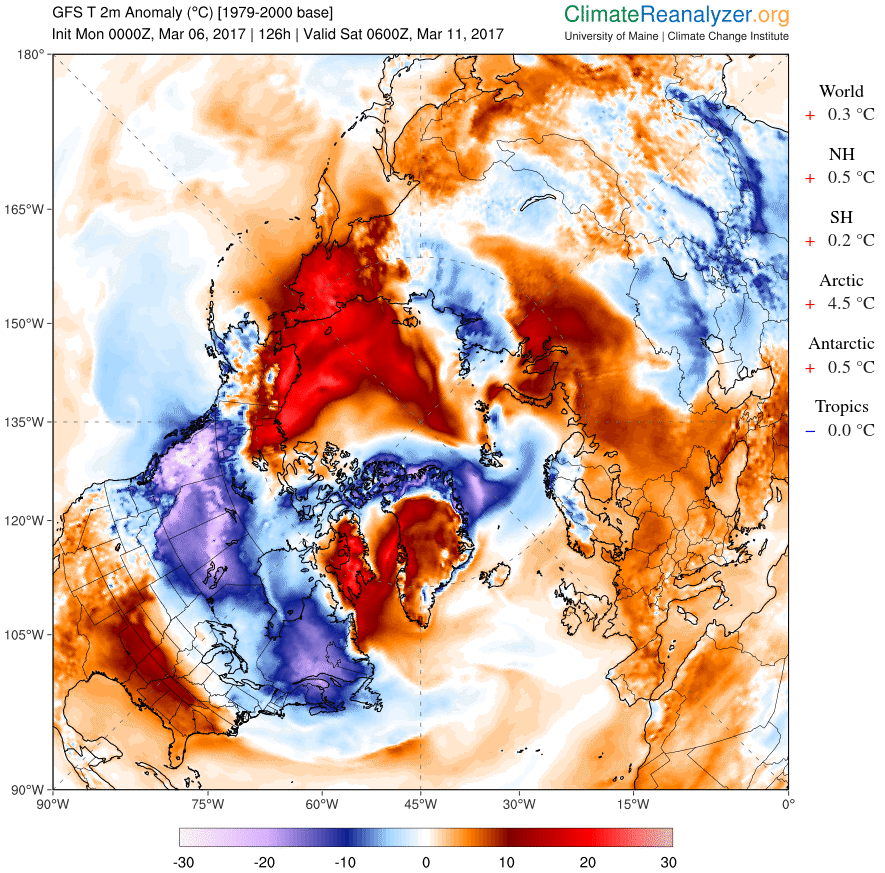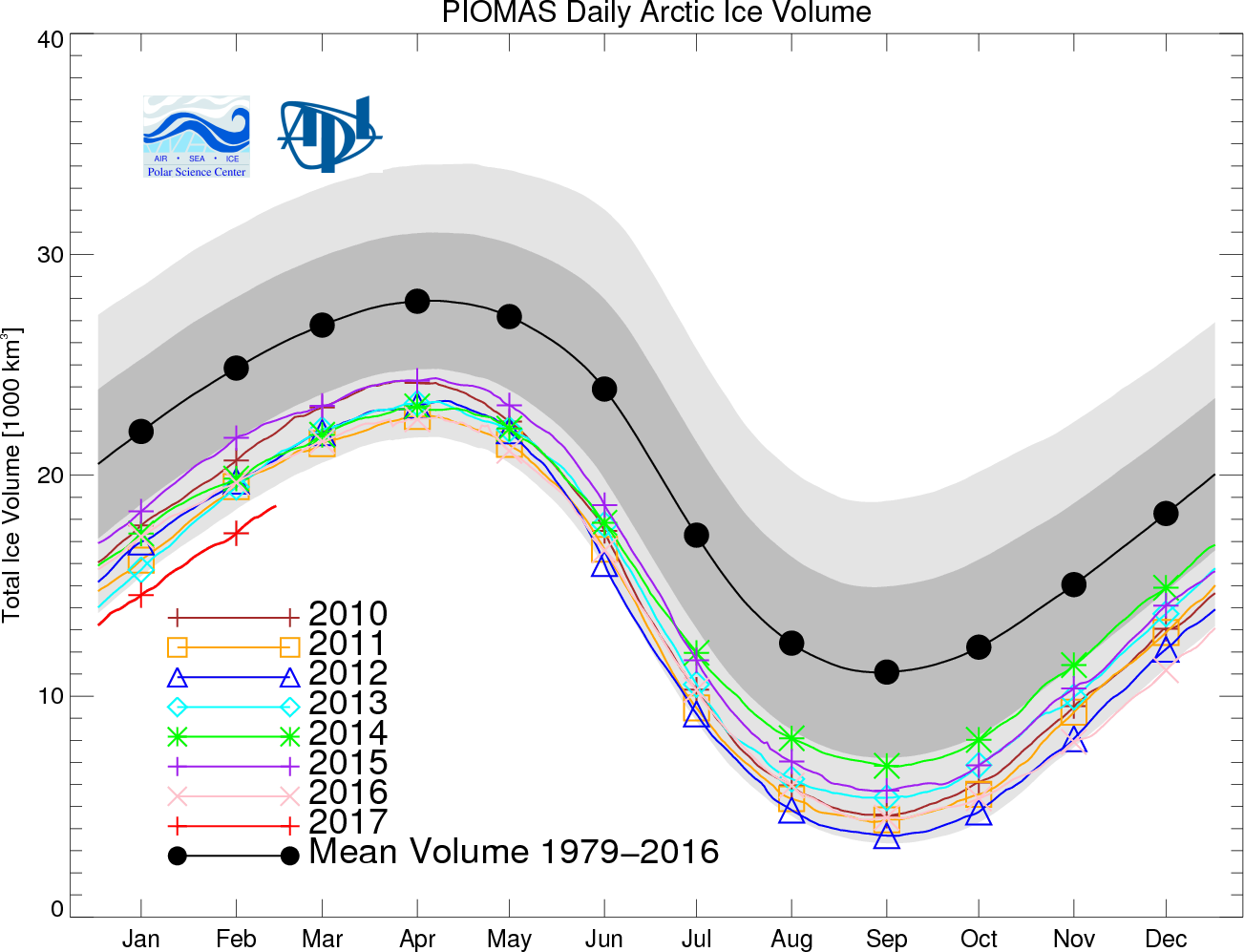Environment & Energy
Related: About this forumChukchi Sea Temps As High As 37F 2/8-9; Arctic Ice Volume Comparable To Summer Volumes In 1980s
Temperatures over the Chukchi Sea are predicted to hit as high as 37 degrees Fahrenheit (2.9 C) on Wednesday and Thursday as a massive high pressure ridge building over Alaska pulls warm, moist Pacific air northward. These temperatures represent staggering warmth for this Arctic Ocean zone during March when temperatures are typically about 54 degrees F (30 degrees C) cooler.
This recent warm wind invasion is one of many observed over the past five years in which enormous bulges in the Jet Stream have pierced deep into what was once a mostly impenetrable pall of winter chill hanging over the Arctic. It’s a new atmospheric condition associated with rampant fossil fuel burning. One that has produced considerable damage to the Arctic environment by reducing sea ice coverage, threatening key species, melting glaciers and thawing permafrost.
Such incursions of extreme warmth bear the obvious marks of a failing of Arctic cold brought on by human-forced climate change and have tended to generate significant spikes in overall Arctic surface temperatures during fall, winter, and spring. This week’s warm air invasion of the Chukchi is expected to help push readings for the entire region above the 66 degree north latitude line to 4.5 C (8 F) above average for this time of year. That’s a strong departure for this region during the month of March when the typically more uniform advance of warmth in the lower latitudes tends to strengthen the Jet Stream — locking in Polar winter conditions in the far north through about the middle of April.
 ?w=600&h=592
?w=600&h=592
(The warm wind invasion of the Chukchi Sea is expected to help push overall Arctic temperatures considerably higher. Image source: Climate Reanalyzer.)
EDIT
Arctic sea ice volume for both January and February of 2017 are now far below past record low trend lines for this time of year. Present record low monthly values for this past February are around 17,000 cubic kilometers vs previous record lows for the month during 2013 at around 19,500 cubic kilometers. Last February’s sea ice volume average of 17,000 cubic kilometers is about the same sea ice volume measured at the end of melt season in September of 1981. In other words, sea ice volume in winter now is comparable to sea ice volumes during the summers of the early 1980s.
 ?w=600&h=459
?w=600&h=459
(Arctic sea ice volume has never been this low during winter time. Image source: PIOMAS.)
All the record warmth flooding into the Arctic during 2016 and 2017 has undoubtedly contributed to these new record lows for sea ice volume. And a cooling of the Arctic surface relative to recent record warmth during March and April could soften this worrying trend somewhat. To this point, it is worth noting that sea ice extent measures are now closer to past record low trend lines. So there has been some slightly more hopeful inching back to slightly less ridiculously abnormal measures. A more positive movement that will likely take a hit as Arctic temperatures are predicted to significantly warm again this week.
EDIT
https://robertscribbler.com/2017/03/06/warm-winds-take-aim-at-chukchi-as-arctic-sea-ice-volume-hits-record-lows-during-february-of-2017/
OnlinePoker
(5,723 posts)DMI has volume essentially unchanged from the same time last year. PIOMAS has it almost 2000 km3 less.

MedusaX
(1,129 posts)The Chukchi is one of the locations which Rosneft & Exxon have exploration/exploitation rights.
Once sanctions are lifted and these activities take place, vast amounts of seabed methane gas will be released due to the heavy concentration of methane hydrates.
In 2016, the first Arctic Development Conference was held as part of the St.Petersburg International Economic Forum.
In addition to these petroleum related opportunities, future economic development activities planned include: cultivation of the tourism industry and increased shipping /transport infrastructure to facilitate year round navigation/usage.